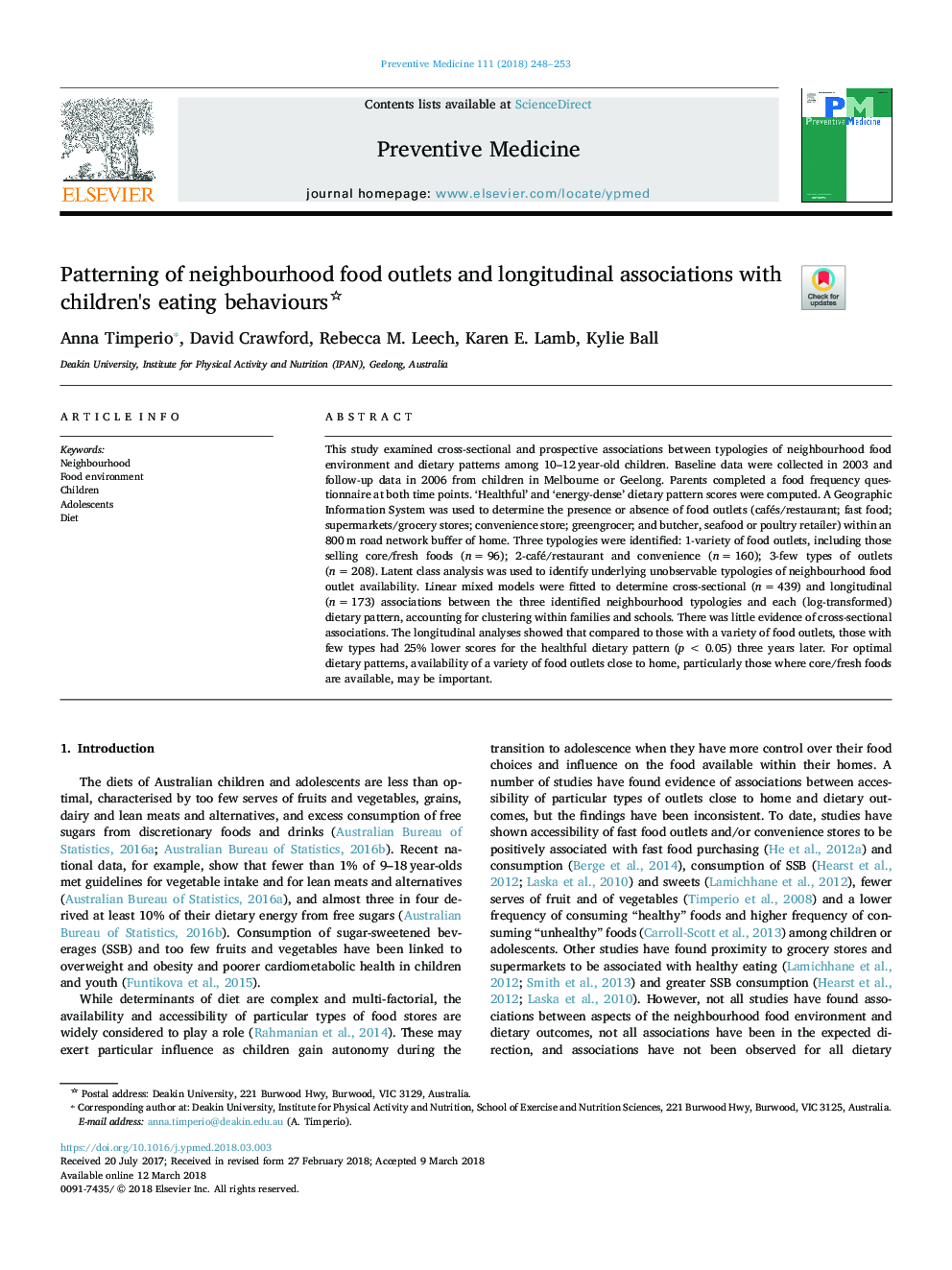| Article ID | Journal | Published Year | Pages | File Type |
|---|---|---|---|---|
| 8693581 | Preventive Medicine | 2018 | 6 Pages |
Abstract
This study examined cross-sectional and prospective associations between typologies of neighbourhood food environment and dietary patterns among 10-12â¯year-old children. Baseline data were collected in 2003 and follow-up data in 2006 from children in Melbourne or Geelong. Parents completed a food frequency questionnaire at both time points. 'Healthful' and 'energy-dense' dietary pattern scores were computed. A Geographic Information System was used to determine the presence or absence of food outlets (cafés/restaurant; fast food; supermarkets/grocery stores; convenience store; greengrocer; and butcher, seafood or poultry retailer) within an 800â¯m road network buffer of home. Three typologies were identified: 1-variety of food outlets, including those selling core/fresh foods (nâ¯=â¯96); 2-café/restaurant and convenience (nâ¯=â¯160); 3-few types of outlets (nâ¯=â¯208). Latent class analysis was used to identify underlying unobservable typologies of neighbourhood food outlet availability. Linear mixed models were fitted to determine cross-sectional (nâ¯=â¯439) and longitudinal (nâ¯=â¯173) associations between the three identified neighbourhood typologies and each (log-transformed) dietary pattern, accounting for clustering within families and schools. There was little evidence of cross-sectional associations. The longitudinal analyses showed that compared to those with a variety of food outlets, those with few types had 25% lower scores for the healthful dietary pattern (pâ¯<â¯0.05) three years later. For optimal dietary patterns, availability of a variety of food outlets close to home, particularly those where core/fresh foods are available, may be important.
Related Topics
Health Sciences
Medicine and Dentistry
Complementary and Alternative Medicine
Authors
Anna Timperio, David Crawford, Rebecca M. Leech, Karen E. Lamb, Kylie Ball,
